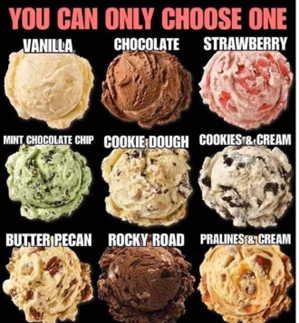Writing effective alternative text
Including images in your content can enhance student understanding, convey complex information, and improve retention (Mayer, 2009). Images included in learning content should be purposeful, aligned, and accessible. Information about using images effectively to support learning is available in the Adding images to a subject site article.
To ensure all students can access the content conveyed in images, an alternate format should be made available. Alternative text (alt text) is a descriptive text substitute for an image that outlines the purpose and meaning to the reader. The image description is read by screen readers and other assistive technologies; and is available if an image fails to load.
Why?
The Web Content Accessibility Guidelines (WCAG3) outline a set of requirements for making content accessible for everyone. Providing alt text for images ensures that all students have equal access to information and learning experiences. It is particularly beneficial for screen reader users and those experiencing slow internet speeds (Web Accessibility Initiative, 2022).
How?
When adding an image via the text editor, you will be prompted to describe this image for someone who cannot see it. This will then be used as the alt text for the image. This should be provided for all images, including complex images, icons and QR codes.
Detailed instructions for adding image descriptions in Moodle are available in the Adding images to a subject site article.
Guidance on writing effective alt text, including specifics for different image types, is located below. Click on the headings to expand/collapse the sections.
- Be clear and concise, aiming for one to two sentences with 100 characters or fewer.
- Include punctuation for clarity.
- Consider the context and the message the image conveys.
- Start with a general overview, then add specific details if required.
- Be objective and accurate in your description. Do not censor or water down the image's content.
- Don’t start with phrases like ‘An image of...’
(Accessible Publishing Learning Network, 2024)
If an image contains text, describe both the illustration and the text clearly and separately. This ensures each component is accessible to the reader.
For example, Accessible Publishing provides the following example:

If the image is complex, including graphs, charts, and diagrams, write alt text that provides a brief description of the image. Then, refer to a more detailed explanation near the image or embedded within the surrounding content.
For QR codes, the alt text should indicate the purpose and destination of the link. QR codes present accessibility issues for some users, so the link should always be presented in another format as well (TetraLogical, 2022).
The WCAG (2023) defines an image as decorative if it serves "only an aesthetic purpose, providing no information, and having no functionality". Examples include images that could be removed without losing any meaning, such as background images and dividers (Australian Government, 2022). Attribute decorative images accordingly to prevent obscuring a screen readers’ experience with clutter.
Related information
- When to describe images decision tree | DIAGRAM Centre
- Poet Training Tool | DIAGRAM Centre
- Everything you need to know to write effective alt text | Microsoft
- Image description guidelines | Diagram Centre
- Context is everything | External resource
- Australian government style manual: Alt text, captions and titles for images | External resource
- Alternative text | External Resource
- Understanding WCAG 2.0: Images of text | External resource
References
Accessible Publishing Learning Network (2024). Best practices for writing image descriptions. https://apln.ca/best-practices-for-writing-image-descriptions/
Australian Government (2022). Alt text, captions and titles for images. Australian Government Style Manual. https://www.stylemanual.gov.au/content-types/images/alt-text-captions-and-titles-images
TetraLogical (2022). Accessibility and QR codes. https://tetralogical.com/blog/2022/08/08/accessibility-and-qr-codes/
Web Accessibility Initiative (2022). Images Tutorial. https://www.w3.org/WAI/tutorials/images/
Web Content Accessibility Guidelines 3.0. W3C World Wide Web Consortium Working Draft 28 May 2024.https://www.w3.org/TR/2024/WD-wcag-3.0-20240528/



